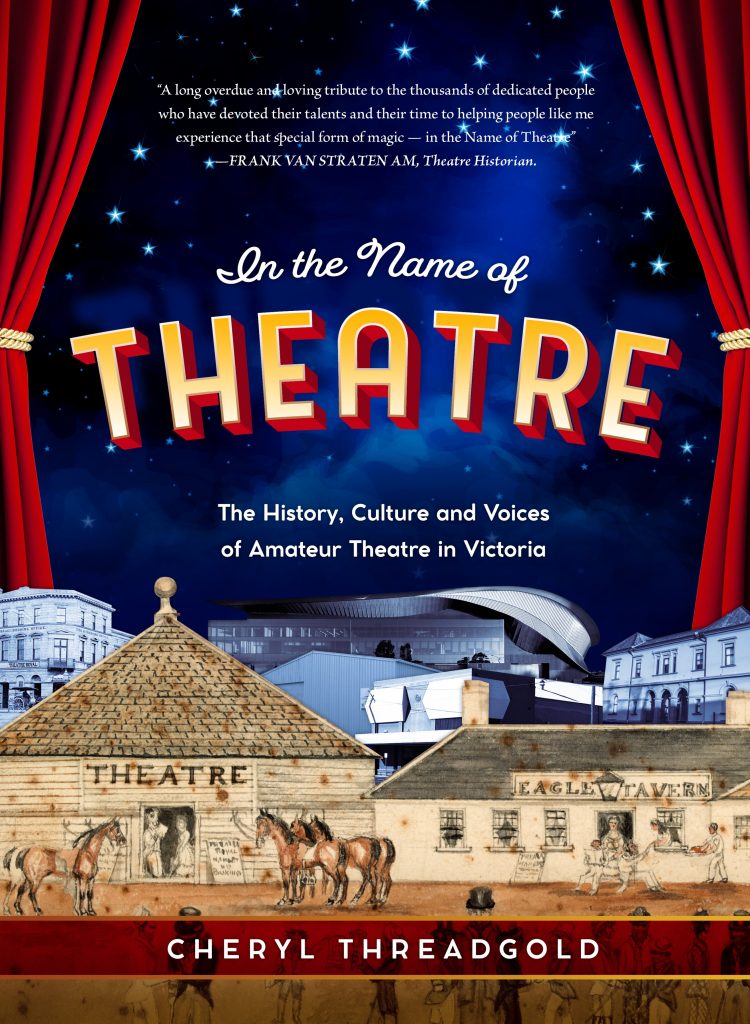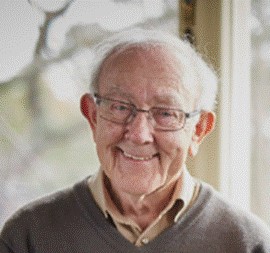book review by Ken Barnes
Imagine being able to consult a thoroughly-researched reference work which covered the entire history of amateur (or community) theatre and explored the many facets of this form of entertainment in Victoria. That dream has become a reality with the imminent release of Dr. Cheryl Threadgold’s authoritative book In the Name of Theatre.
Dr. Threadgold’s association with the theatre began in 1958 with her first appearance on stage, together with a nascent interest in its history. After years with the ABC and as a reviewer for the Melbourne Observer and occasional playwright, her knowledge and writing talents led to the award of an OAM in 2010. That close connection with the theatre has continued to this day.

The work is presented in two parts. Part One is a painstaking review of the long history of amateur theatre, beginning with an acknowledgement of cultural performance by First Nations People and the arrival of the early settlers from overseas. The author brings out the rich and varied development of theatrical groups in regional Victoria, including the goldfields from the 1850s. This growth continued through the early 20th Century but was interrupted by both World War I and World War II, partly because of the absence of male theatre supporters. After World War II, the recovering interest in theatre was reinforced when the Council of Adult Education was formed in 1947 to encourage, inter alia, community activities including the performing arts.
The author details further progression following the creation of the Victorian Drama League in 1952, and the Music Theatre Guild of Victoria in 1986. Dr. Threadgold brings this long and colourful period to life with accurate descriptions and fascinating anecdotes, leading to exploration of the theatre scene in more recent times. Part One concludes with a most interesting analysis of the strengths and weaknesses, threats and transformative benefits that exemplify the theatre world. This very lively part of the book includes many interviews with theatre people from actors and directors to wardrobe coordinators and ticket secretaries. I found it particularly insightful and entertaining.
In Part Two, Dr. Threadgold provides a summary of each theatre company in alphabetical order, from The Adelphi Players and Albury-Wodonga to Yackandandah and Yarra Valley Youth Theatre. Each company’s history, culture and raison d’etre is described, either by knowledgeable members of the group or (if it no longer exists or for other reasons) by the author’s own background research. As a regular theatre-goer, I couldn’t wait to scramble through the pages in search of my favourite groups, often finding information causing surprise or even astonishment. Seeing the names of people I know who are connected to various companies of course added a personal touch.
The book is not only entertaining and a source of inspiration, it also provides a forensic analysis of Victoria’s theatre world which will stand the test of time. For example, Appendix 1 is a comprehensive list of all the musical and non-musical theatre companies, and Appendix 2 provides further details of research data relating to the weaknesses, threats and transformative benefits faced by each.
In his introductory remarks, VDL President Bruce Cochrane reminded readers that Victoria is the most active theatrical state in Australia and congratulated Dr. Threadgold on achieving a remarkable feat in bringing the story to her readers. Music Theatre Guild President Ang Cuy pointed to Victorian theatre’s rich history and tradition, adding that the book is a lasting tribute to the countless people who have contributed to this landscape.
The author herself dedicates the book …. “to the thousands of theatre-makers, past and present, who dedicate their time. talents and skills to create the wonderful life-force phenomenon known as amateur theatre.”
The book is replete with illustrations, with many photographs of historical interest. Leafing through the pages, the reader comes face to face with a who’s who of theatre people past and present. It is indeed a remarkable history and an important part of the continuing cultural development of Victoria. In the Name of Theatre brings this together and amply rewards the reader, because it is both a good story and a valuable reference work.

In the Name of Theatre by Cheryl Threadgold.
Recommended retail price is $45 plus GST. Cheryl is kindly offering copies to the VDL community at $40 with postage, with $5 from each sale going to the VDL. This price applies up until Sept 5 2020.
Contact Cheryl – thrdgld@optusnet.com.au
After Sept 5 the book can be bought for $49.50 including free shipping anywhere in Australia via https://www.inthenameoftheatre.com.au/
